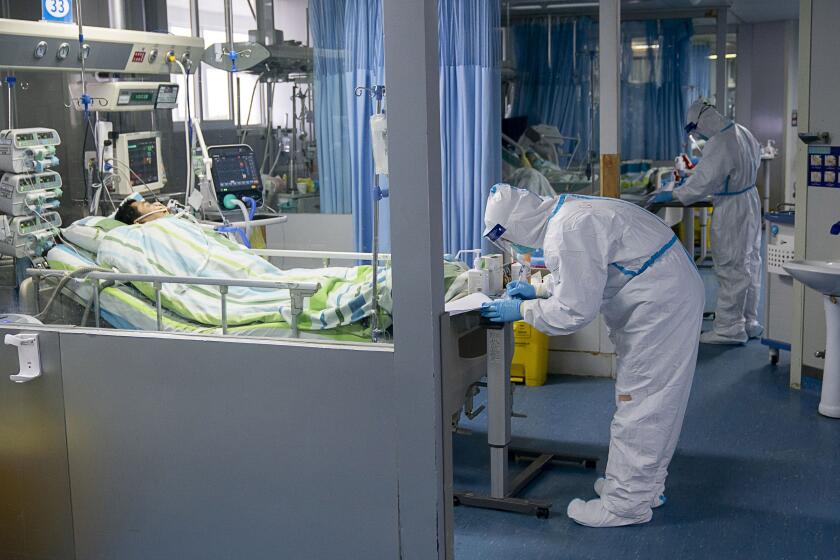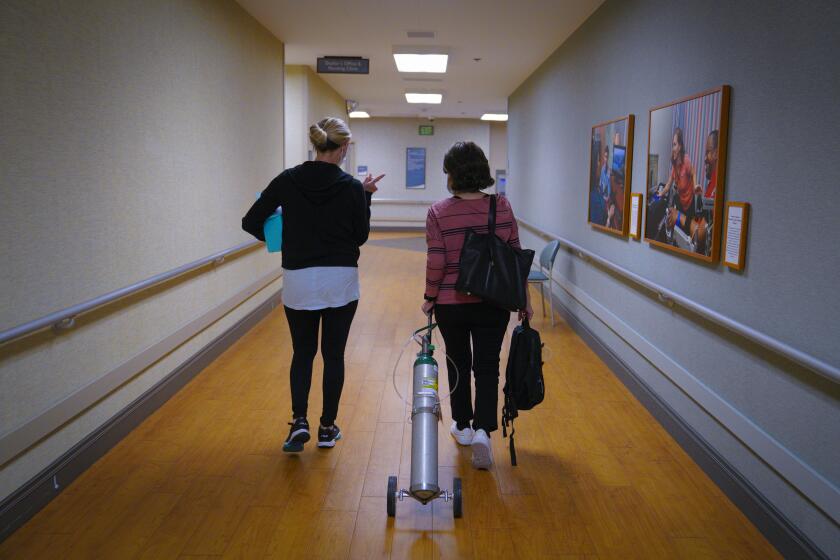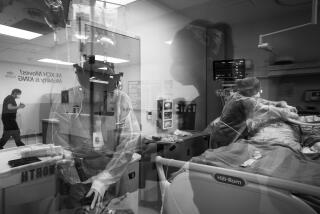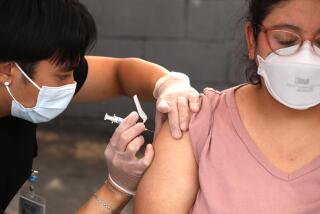USC researchers identify symptoms associated with increased risk for long COVID

From the start of the pandemic, patients and doctors alike have been frustrated by the sizable minority of coronavirus infections that turn into long COVID, a perplexing collection of lingering and often disabling symptoms that persist weeks, months or years after the initial infection subsides.
The condition has been reported in both children and adults; in those who had preexisting conditions and those in robust health; in patients hospitalized with COVID-19 and those who experienced only mild symptoms during their initial infection.
A new study from researchers at USC offers some insights into the prevalence of long COVID and suggests some early clues for who might be more likely to develop long-term symptoms.
The study, published this month in Scientific Reports, found that 23% of people who had coronavirus infections between March 2020 and March 2021 were still reporting symptoms up to 12 weeks later.
Researchers recruited roughly 8,000 people, some infected and some not, to answer biweekly questions about their overall health and COVID-19 status. By the end of the yearlong survey period, they had a sample of 308 people who had gotten the disease at some point in the year.
After filtering out respondents with symptoms such as headache and fatigue prior to infection as a result of unrelated conditions like seasonal allergies, the team found that nearly 1 in 4 COVID-19 sufferers were still grappling with symptoms 12 weeks after becoming infected.
Researchers are getting serious about understanding a disease patients call “long COVID.” Its symptoms include aches, fatigue, sleep problems and brain fog.
“These people are not able to do necessarily all the activities they would want to do, not able to fully work and take care of their families,” said Eileen Crimmins, a demographer at USC’s Leonard Davis School of Gerontology and a coauthor of the study.
“That’s an aspect of this disease that needs to be recognized, because it’s not really as benign as some people think,” she said. “Even people who have relatively few symptoms to start with can end up with long COVID.”
Determining who is at greater risk for long COVID has proved a challenge to demographers and healthcare providers.
Several previous studies have identified women as being at greater risk. But the USC study found no relationship in its sample between long COVID and age, gender, race or preexisting health conditions including cancer, diabetes, hypertension and heart disease.
More than a year after he was infected with the coronavirus, 14-year-old Ami Korn, who now lives in Georgia, is still struggling to fully recover.
It did note a higher risk in patients who had obesity prior to infection. And it also spotted some associations between specific symptoms people experienced during their initial infection and the likelihood of developing long COVID. Patients who reported sore throats, headaches and, intriguingly, hair loss after testing positive were more likely to have lingering symptoms months later.
“Our assumption is that that hair loss reflects extreme stress, potentially a reaction to a high fever or medications,” Crimmins said. “So it’s probably some indication of how severe the illness was.”
Because it covered only the first year of the pandemic, the study doesn’t account for two major developments: vaccines and variants. None of the COVID-19 patients in the sample were eligible for vaccines during the study period, and all were infected before the Alpha variant from the U.K reached U.S. shores.
While the study’s 308 respondents were representative of the population, no snapshot of a few hundred people can tell the whole story of the roughly 200 million people in the U.S. who have had the virus, according to estimates from the Centers for Disease Control and Prevention.
“The authors made a commendable effort to identify factors associated with long COVID,” said Dr. Alain Lekoubou Looti, a neurologist at Penn State University who was not involved with the study. “However, these factors may need to be confirmed in larger samples.”
A study of more than 1,200 COVID survivors who were once hospitalized finds that about half have at least one symptom a year later.
The most common long COVID symptoms reported were headache, nasal congestion, abdominal pain, fatigue and diarrhea. But the study did not address many of the symptoms people living with long COVID describe as the most debilitating, said Hannah Davis, a co-founder of the Patient-Led Research Collaborative, a research group that focuses on the condition.
“We need work like this, but this work also indicates they aren’t very familiar with what long COVID is,” Davis said. “The list of symptoms are predominantly acute COVID symptoms and don’t include the most common symptoms of post-exertional malaise, cognitive dysfunction, memory loss, sensorimotor symptoms and others.”
Defining long COVID presents a challenge to those attempting to track or treat it. COVID-19 is a chimerical beast — symptoms evolve as the condition drags on, and can vary widely among patients.
The fluidity of long COVID makes it hard to gauge its prevalence. Various studies have placed the percentage of people reporting enduring symptoms 12 weeks after their initial infection at anywhere from 3% to 50%.
“We need a universal case definition before we can really understand the prevalence of long COVID. Right now, the definition varies wildly across studies, leading to a big range in prevalence estimates,” said Jana Hirschtick, an epidemiologist with the University of Michigan’s School of Public Health. “After all this time, we still don’t have a clear picture of who is at greatest risk.”
Vaccination should temper the number and severity of persistent symptoms.
The absence of strict diagnostic criteria is also a major issue for patients attempting to seek treatment. At the moment, long COVID is considered an “exclusionary diagnosis,” meaning one that is given only after all other valid possibilities have been ruled out, said Melissa Pinto, an associate professor of nursing at UC Irvine who studies the condition. In the U.S., that can mean a long and expensive process of submitting to various tests and specialists.
For many long COVID patients, 12 weeks is just the beginning of a months- or years-long ordeal.
“I’ve known people that have had this now for 2½ years,” Pinto said. “There’s no safety net, really, for these individuals.”










